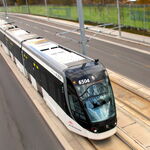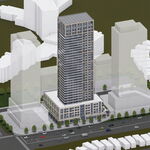When it comes to nudging drivers out of cars, Vancouver ranks as North America’s biggest success story. Fully 10 percent of commutes to work are on bikes, far exceeding
U.S. and
Canadian cities of a comparable size.
As of 2015, half of all trips within city limits are taken on foot, bike, or transit—a goal the city had hoped to reach by 2020. Ahead of schedule—and way ahead of its peers on this continent—Vancouver’s “active transit” success is the subject of a
new short documentary by STREETFILMS. In interviews with key planning officials and advocates in attendance at a summer 2016 placemaking conference, filmmaker Clarence Eckerson traces the city’s remarkable urban trajectory and shows how Vancouver managed to avoid the planning pitfalls that claimed so many other towns over the past few decades.
It all began back in the late 1960s, says the city’s former chief planner (and
urban-Twitter celeb) Brent Toderian, when residents rejected
a proposed highway that would have torn up the dense urban core and separated it from its famous waterfront. Vancouver is still the only major North American city without a freeway running through it. The open waterfront became the location of the hugely successful Expo ‘86, which was themed around the future of transportation and featured the debut of the elevated
SkyTrain, a swoopy automated light rail system.
A new extension that opened in December allowed SkyTrain to reclaim its title as the world’s longest fully automated metro system in the world (besting the similarly driverless Dubai Metro). The system also helped pave the way for the dramatic transformation of Vancouver’s waterfront a couple of years later. Hundreds of new residences and offices were built, unified by pedestrian thoroughfares and the city’s seawall—which is “routinely ranked as the best public space in at least Canada,” says Toderian.
The 2010 Winter Olympics encouraged more car-to-pedestrian street conversations, and peppering the in-between years were lots of smart decision-making, such as turning a stretch of Granville Street into a pedestrian mall in the 1970s and the city’s 2008 strategic shift to support cycling as daily form of mobility rather than pure recreation. A mess of new protected bike lanes have pushed Vancouver’s active-transit infrastructure beyond the downtown core: “24 percent of our bike network is now considered [appropriate] for all ages and abilities,” says Dale Bracewell, the city’s manager of transportation planning. A $2 billion plan to expand TransLink, Vancouver’s mass transportation network, was
approved last month by the mayor’s council, and stands to bring active transit options to parts of the city that haven’t had them before.
“As a user … I’ve got choices. And the best thing is not just to have available choices but delightful choices, every day,” says Toderian. “That’s been built up over decades—generations of city-making that are really now coming together.”




